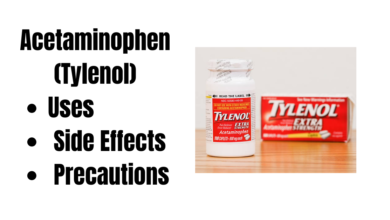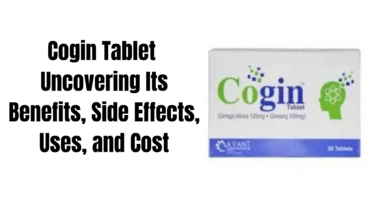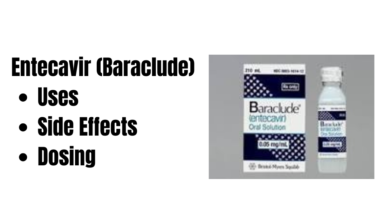Morphine: Uses, Side Effects, Dosing, and Interactions

Introduction
Brief Overview of Morphine
Morphine, a powerful opioid, has long been a cornerstone in pain management. Derived from the opium poppy, this medication has a rich history in alleviating severe pain. Today we are exploring Morphine: uses, side effects, dosing, and interactions
Importance of Understanding Morphine Uses
While morphine is a potent pain reliever, its uses extend beyond mere pain management. Understanding its broader applications empowers patients and healthcare providers alike.
Medical Uses of Morphine
Pain Management
Morphine is renowned for its efficacy in managing acute and chronic pain. From surgical procedures to cancer-related pain, its role in providing relief is invaluable.
Post-Surgery Recovery
In the post-operative period, morphine helps patients cope with pain, facilitating a smoother recovery process and improving overall surgical outcomes.
Terminal Illness Care
For individuals facing terminal illnesses, morphine is a crucial component in palliative care, enhancing the quality of life by mitigating pain and promoting comfort.
Potential Side Effects
Common Side Effects
Like any medication, morphine can cause side effects. Nausea, constipation, and drowsiness are common, but these often diminish over time.
Severe Side Effects
In rare cases, morphine may lead to severe side effects, including respiratory depression and allergic reactions. Prompt medical attention is crucial if such symptoms arise.
Dosage Guidelines
Determining the Right Dose
Establishing the correct dosage is a delicate balance. Healthcare providers carefully assess factors such as the type and severity of pain, the patient’s medical history, and individual responses to the medication.
Adjustments for Specific Conditions
Patients with certain conditions, such as kidney or liver impairment, may require dosage adjustments. Tailoring treatment plans to individual needs ensures optimal pain management.
Interactions with Other Medications
Drug Interactions
Morphine can interact with other medications, potentially enhancing or inhibiting their effects. Open communication with healthcare providers is essential to avoid complications.
Importance of Medical Consultation
Before starting morphine or any new medication, consulting with a healthcare professional is crucial. This helps identify potential interactions and ensures a comprehensive understanding of the treatment plan.
Administering Morphine
Different Forms of Administration
Morphine is available in various forms, including tablets, injections, and patches. The choice of administration depends on factors such as the severity of pain and the patient’s ability to take oral medications.
Considerations for Patient Comfort
Healthcare providers consider patient comfort when determining the form of morphine administration. Factors such as convenience, pain levels, and individual preferences play a role in decision-making.
Addressing Concerns about Addiction
Differentiating Between Dependence and Addiction
While morphine can lead to physical dependence, it’s essential to distinguish this from addiction. Dependence is a natural physiological response, whereas addiction involves compulsive drug-seeking behavior.
Monitoring and Safeguarding Against Misuse
Healthcare providers play a crucial role in monitoring patients for signs of misuse or addiction, ensuring that morphine is used as part of a comprehensive pain management plan.
Balancing Pain Relief and Side Effects
Finding the Optimal Dose
Striking a balance between effective pain relief and minimizing side effects requires ongoing assessment. Regular communication between patients and healthcare providers is key to achieving this balance.
Individualized Treatment Plans
Recognizing that each patient’s response to morphine is unique, healthcare providers craft individualized treatment plans, taking into account medical history, pain levels, and lifestyle.
Patient Education and Empowerment
Understanding Morphine
Empowering patients with information about how morphine works, potential side effects, and the importance of adherence to prescribed guidelines enhances treatment outcomes.
Communication with Healthcare Providers
Open and transparent communication between patients and healthcare providers fosters a collaborative approach to pain management, ensuring that treatment aligns with the patient’s goals and preferences.
Real-life Stories and Testimonials
Positive Experiences
Exploring positive experiences shared by individuals who have benefited from morphine helps destigmatize its use and provides valuable insights for those considering this form of pain management.
Challenges and Solutions
Examining challenges faced by individuals using morphine, along with the solutions implemented, offers a realistic perspective and guidance for overcoming potential obstacles.
The Importance of Regular Check-ups
Monitoring the Efficacy of Treatment
Regular check-ups allow healthcare providers to assess the ongoing efficacy of morphine treatment and make necessary adjustments to the dosage or administration method.
Prompt Identification and Resolution of Issues
Early identification of any emerging issues, whether related to side effects or changes in the patient’s condition, enables prompt resolution, contributing to a more effective and comfortable treatment journey.
Overcoming Stigma and Fear
Addressing Misconceptions
Dispelling myths and misconceptions surrounding morphine helps reduce stigma and fear associated with its use, promoting a more informed and supportive community.
Fostering a Supportive Environment
Creating a supportive environment for individuals using morphine involves community education, empathy, and understanding. This helps build a network that encourages open conversations about pain management.
Navigating Morphine in Palliative Care
Improving Quality of Life
Morphine plays a crucial role in enhancing the quality of life for individuals in palliative care, providing relief and comfort during challenging times.
Comprehensive Support for Patients and Families
Palliative care involves not only medical support but also emotional and psychological assistance for both patients and their families, recognizing the holistic nature of care.
For More Tetanus Related Medicines: Read Now

Conclusion
Recap of Key Information
Morphine, when used appropriately, is a powerful tool in pain management. Understanding its uses, potential side effects, dosing guidelines, and interactions is crucial for informed decision-making.
Encouraging Informed Decision-Making
Encouraging individuals to engage in open conversations with healthcare providers, ask questions, and actively participate in their pain management plan empowers them to make informed decisions aligned with their well-being.
FAQs
Can morphine be used for chronic pain?
Yes, morphine is often prescribed for chronic pain, but careful monitoring and adjustments to the treatment plan are essential to manage potential side effects.
Is morphine only used for cancer-related pain?
No, morphine is used for various types of pain, including post-surgery recovery, injuries, and other chronic conditions.
How quickly does morphine relieve pain?
The onset of pain relief varies depending on the form of administration. Intravenous administration typically provides faster relief than oral forms.





https://alliancepainstore.com/product/what-is-the-cost-of-morphine/
https://alliancepainstore.com/product/buy-adderall-online/
https://alliancepainstore.com/product/buy-adipex-online/
https://alliancepainstore.com/product/buy-demerol-online/
https://alliancepainstore.com/product/order-dilaudid-online-today/
https://alliancepainstore.com/product/oxycodone-for-sale-near-me/
https://alliancepainstore.com/product/oxycontin-for-sale-online/
https://alliancepainstore.com/product/buy-percocet-online/
https://alliancepainstore.com/product/cost-price-of-hydrocodone-online/
https://alliancepainstore.com/product/price-of-suboxone-strips-online/
https://alliancepainstore.com/product/what-is-the-cost-of-morphine/
https://alliancepainstore.com/product/buy-adderall-online/
https://alliancepainstore.com/product/buy-adipex-online/
https://alliancepainstore.com/product/buy-demerol-online/
https://alliancepainstore.com/product/order-dilaudid-online-today/
https://alliancepainstore.com/product/oxycodone-for-sale-near-me/
https://alliancepainstore.com/product/oxycontin-for-sale-online/
https://alliancepainstore.com/product/buy-percocet-online/
https://alliancepainstore.com/product/cost-price-of-hydrocodone-online/
https://alliancepainstore.com/product/price-of-suboxone-strips-online/